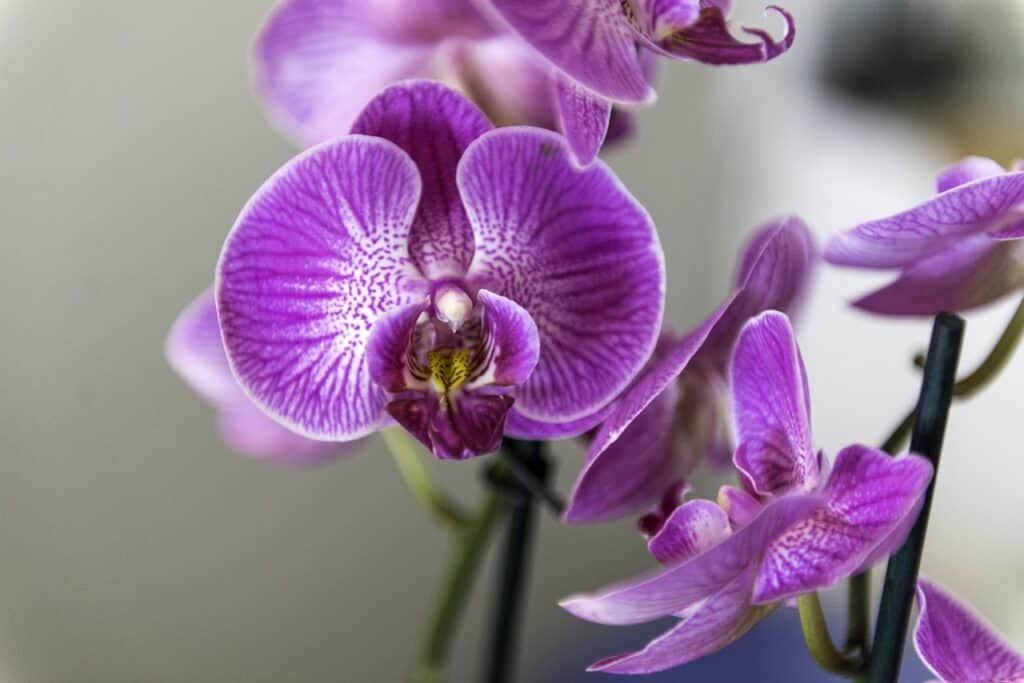Orchids are one of the most beautiful and elegant plants in the world. They require a specific set of environmental conditions to thrive, and light is one of the most critical factors. Understanding light requirements for your orchid is essential if you want to grow a healthy and flourishing plant. In this guide, we’ll discuss everything you need to know about providing the ideal amount of light for your orchid.

Understanding the Light Requirements of Orchids
Orchids come in many different species and varieties, and each has its specific light requirements. Some orchids require high levels of light, while others can thrive in low-lighting conditions. Understanding the light requirements of your orchid is essential if you want to provide the right amount of light to ensure its growth and development.
Different Types of Orchids and Their Light Requirements
As mentioned earlier, multiple orchid species and varieties exist, and each has its unique light requirements. Here are some of the common orchid types and their light requirements:
• Phalaenopsis Orchids: Phalaenopsis orchids are some of the most popular orchids for home growers. They thrive in low to medium light conditions and need protection from direct sunlight.
• Cattleya Orchids: Cattleya orchids require moderate to high light levels to prevent leaf burn and maintain healthy growth.
• Dendrobium Orchids: Dendrobium orchids require plenty of indirect sunlight and some direct sunlight, especially in the morning. Exposure to direct sun in the afternoon can burn their leaves.
• Vanda Orchids: Vanda orchids require high light levels but can tolerate indirect light.
• Oncidium Orchids: Oncidium orchids require moderate to high light levels to thrive and bloom effectively.
Factors That Affect Light Requirements
Several factors affect the light requirements of orchids. Understanding these factors can help you adjust lighting conditions, ensuring that your orchids receive the right amount and availability of light to thrive.
Light Intensity, Duration, and Quality
Three critical factors that affect light requirements for orchids are intensity, duration, and quality. Intensity refers to the amount of light reaching your plant. Duration refers to the amount of time your plant is exposed to light, while quality refers to the specific wavelengths of light your plant receives.
Low-intensity lighting may be sufficient for some orchids, while others need high-intensity lighting. Some orchids may grow adequately with four to five hours of sunlight, while others require as much as twelve hours of light. Similarly, some orchids may require full-spectrum light, while others may only need specific wavelengths.

How to Measure Light Intensity for Your Orchids
To determine the right amount of light for your orchid, you need to measure the intensity of light plants receive in the area where they’re growing. This will help you ensure that your orchids receive the ideal amount of light, preventing under and overexposure.
Tools to Measure Light Intensity
The most common tool used to measure light intensity is the Lux Meter. This meter measures the illumination intensity in Lux, a unit of measurement for the amount of light falling on the surface of an area. It’s a simple and affordable tool that provides an accurate reading of the amount of light available to your orchids.
Ideal Light Intensity for Different Types of Orchids
Different types of orchids have different light intensity requirements. Phalaenopsis orchids, for example, require low to medium light, while Vanda orchids require high light intensity. Here’s an overview of the ideal light intensity for several orchid types based on the Lux Meter reading:
• Low-Light Orchids: 500 – 1,000 Lux
• Medium-Light Orchids: 1,000 – 3,000 Lux
• High-Light Orchids: 3,000 – 5,000+ Lux
Providing Optimal Light for Your Orchids
Once you have determined the ideal amount of light required for your orchid, it’s time to provide it with the right lighting conditions.
Choosing the Right Lighting System for Your Orchids
You should choose a lighting system that can provide the right light intensity, duration, and quality according to your orchid’s requirements. Common lighting systems include fluorescent, LED, HID, and natural sunlight.
Fluorescent lights are ideal for low to medium-light orchids and last longer than incandescent bulbs. LED lights provide bright light and save energy, making them ideal for orchids that require high light intensity. HID lights provide intense light, making them ideal for orchids that require high light levels. Finally, natural sunlight is the best light source for orchids but requires careful management to prevent overexposure to direct sunlight.
Placement of Your Orchids for Maximum Light Absorption
The placement of your orchids is critical for maximum light absorption. Orchids require adequate light for optimal growth, so it’s crucial to place them in an area where they can receive the required amount of light.
Place your orchids in a north-facing window if they require low levels of light. If your orchids require high-intensity light, placing them near a south-facing window or under artificial lighting systems is recommended. Ensure that your orchids are not too close to the lights, as this can lead to overheating or burning.

Conclusion
Orchids require a specific set of environmental conditions to thrive, and light is one of the most critical factors. In this guide, we have discussed several aspects of providing the ideal amount of light for your orchids. Remember to consider the type of orchid that you have, measure light intensity, and choose the right lighting system for maximum absorption. These measures will ensure that your orchid thrives and blooms beautifully.

